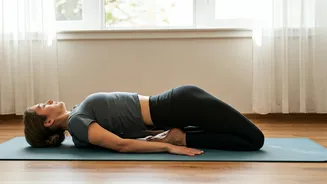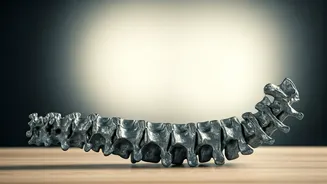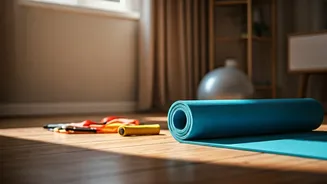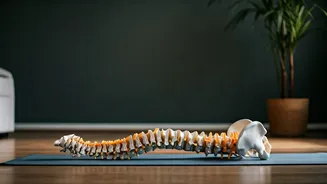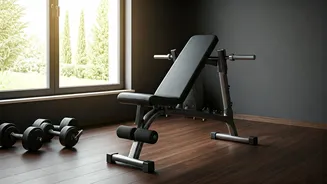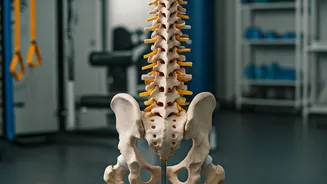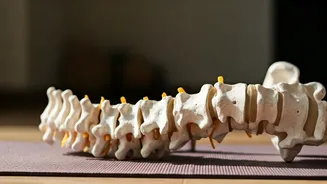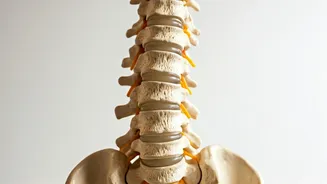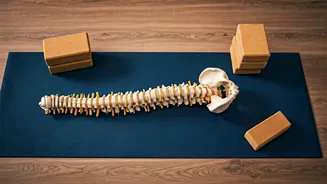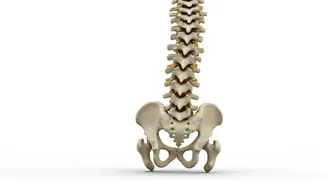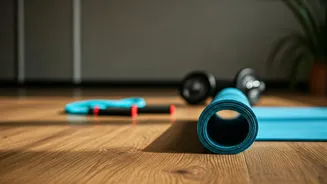Gentle Spinal Twists
Spinal twists are remarkably beneficial for enhancing flexibility and relieving stiffness in the back. To perform this exercise, begin by sitting upright
on the floor with your legs extended. Bend your right knee and place your right foot over your left leg, positioning it on the outside of your left thigh. Gently twist your torso to the right, placing your left hand on the outside of your right knee for support. Use your right hand behind you for added balance. Hold this position for approximately 30 seconds, maintaining deep, steady breaths. Then, slowly return to the center and repeat the process on the opposite side. This exercise gently mobilizes the spine, easing tension and promoting better circulation, which helps in alleviating back pain. Doing this regularly can noticeably improve spinal mobility and diminish discomfort.
Pelvic Tilts Exercise
Pelvic tilts are excellent for strengthening core muscles, which are crucial for supporting the spine and reducing back pain. To start, lie on your back with your knees bent and your feet flat on the floor. Ensure your lower back is pressed against the floor. Focus on engaging your abdominal muscles and gently tilt your pelvis upwards, causing your lower back to flatten further against the floor. Hold this position for a few seconds, breathing deeply. Then, relax your abdominal muscles and allow your lower back to arch slightly away from the floor. Repeat this tilting motion for several repetitions. This exercise enhances the stability of your core and improves spinal alignment, contributing significantly to reducing back pain. Regular pelvic tilts improve core strength, posture, and back health.
Cat-Cow Stretch Routine
The Cat-Cow stretch is a dynamic exercise that improves spinal flexibility and coordination. Begin on your hands and knees, ensuring your hands are aligned under your shoulders and your knees are under your hips. For the 'Cat' pose, round your spine towards the ceiling, tucking your chin to your chest and engaging your abdominal muscles. Imagine you're drawing your belly button towards your spine. For the 'Cow' pose, drop your belly towards the floor, arch your back, and lift your head and chest, gazing upward. Cycle through these poses slowly, coordinating your breath with each movement: inhale during the Cow pose and exhale during the Cat pose. This exercise enhances blood flow to the spine, stretches the muscles, and increases the range of motion. Performing this regularly leads to reduced stiffness and pain, promoting spinal health.
Knee-to-Chest Stretch
This stretch effectively releases tension in the lower back and hamstrings. Start by lying on your back with your knees bent and feet flat on the floor. Gently bring one knee towards your chest, clasping your hands around the shin or the back of your thigh. Gently pull the knee closer to your chest while keeping the other leg relaxed. Hold this position for about 30 seconds, breathing deeply. Repeat the process with the other leg. Additionally, you can bring both knees to your chest simultaneously to intensify the stretch. The knee-to-chest stretch lengthens the lower back muscles, easing pressure and reducing pain. Consistent practice improves flexibility and reduces tightness in the lower back, contributing to overall spinal health. Remember to maintain slow, controlled movements throughout.
Bird Dog Exercise
The Bird Dog exercise is exceptional for enhancing core stability and improving balance, which are vital for reducing back pain. Begin on your hands and knees, ensuring your hands are aligned under your shoulders and your knees are under your hips. Extend one arm forward and simultaneously extend the opposite leg backward, keeping your core engaged and your back straight. Maintain a straight line from your extended hand to your heel, avoiding any arching in your lower back. Hold this position for a few seconds, then return to the starting position and repeat on the other side. This exercise strengthens the abdominal muscles and improves coordination, which is helpful in providing support to the spine. Regularly doing this exercise improves your posture and reduces strain on your back, preventing and alleviating pain.
